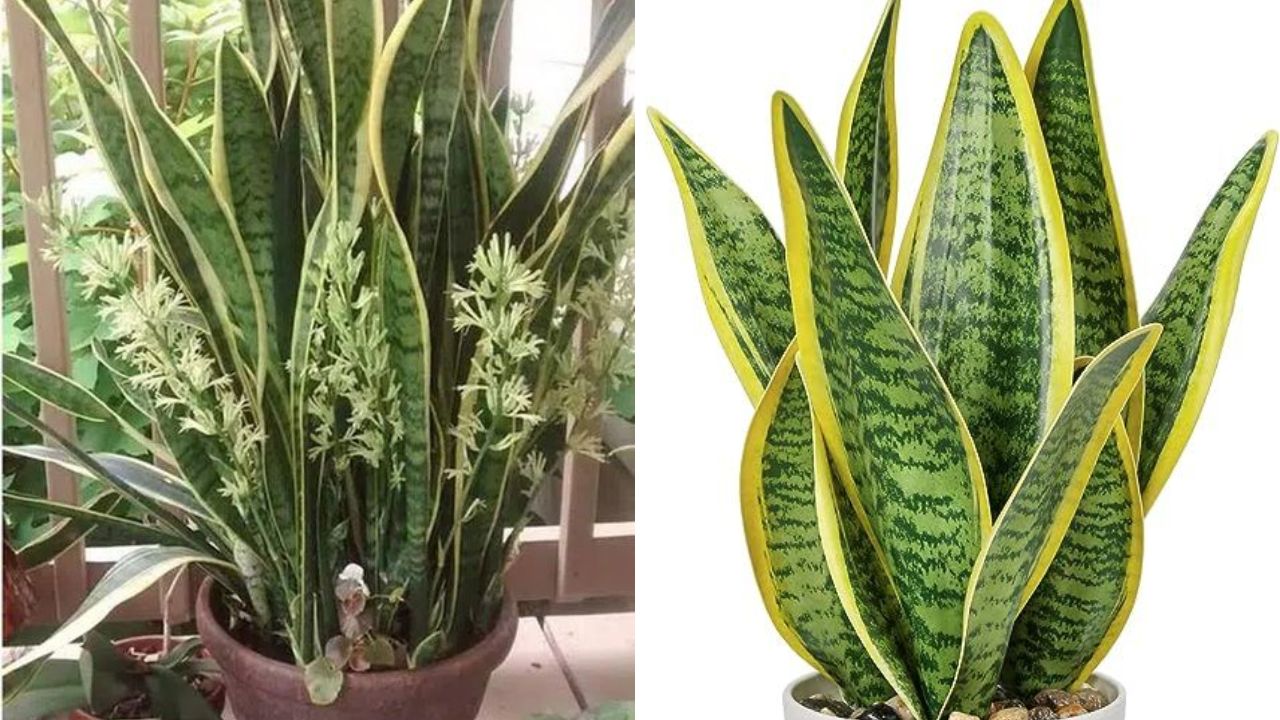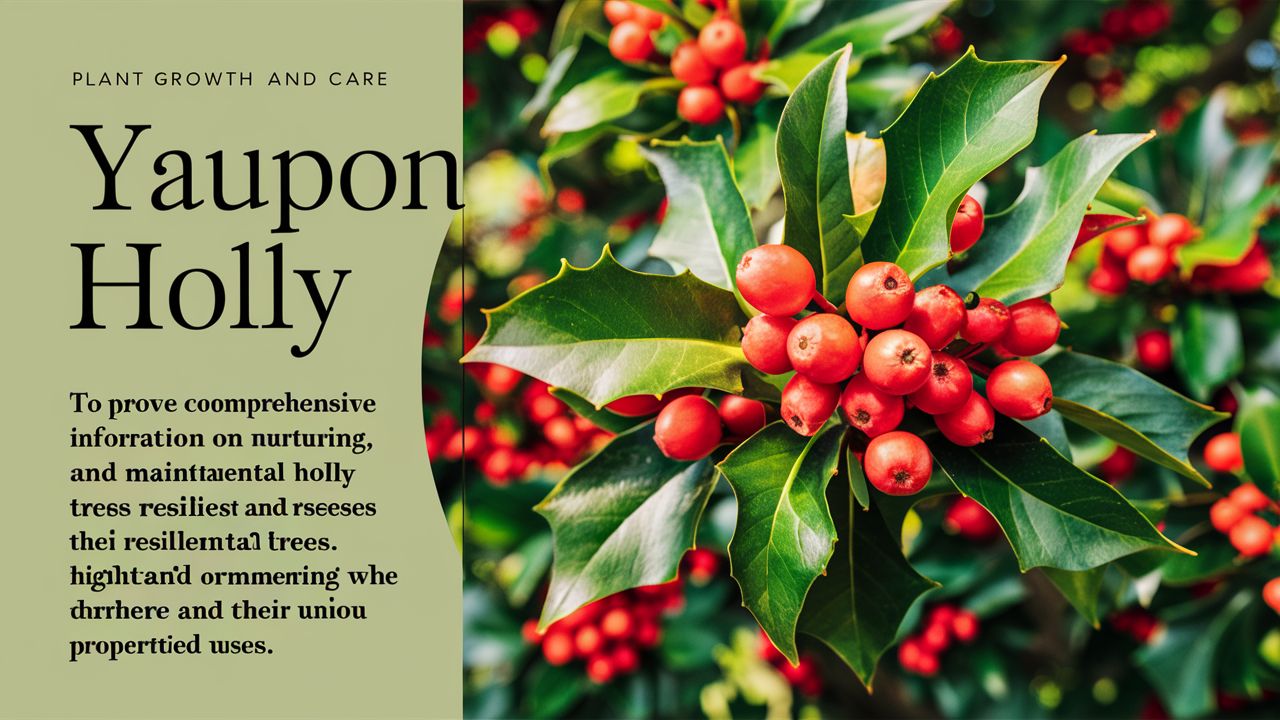Yaupon holly (Ilex vomitoria), commonly just called yaupon, is a tiny tree or broadleaf evergreen shrub that brings color to your garden all year long. However, because of its vibrant color combination, it is thought of as a holiday plant. This adaptable choice is perennial in warmer climates and can thrive in a variety of soil types, full sun, and deep shade.
Remember that both humans and animals can become poisoned by yaupon holly and its berries.
Table of Contents
ToggleYaupon Holly Overview
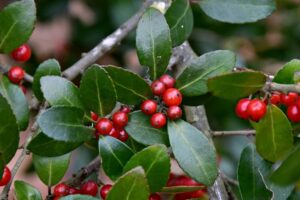
| Common Name | Yaupon holly, yaupon |
| Botanical Name | Ilex vomitoria |
| Family | Aquifoliaceae |
| Plant Type | Shrub, tree |
| Mature Size | 10-20 ft. tall, 8-12 ft. width |
| Sun Exposure | Full, partial, shade |
| Soil Type | Loamy, sandy, clay, silt, moist but well-drained |
| Soil pH | Acidic, neutral, alkaline |
| Bloom Time | Spring |
| Flower Color | Green, white |
| Hardiness Zones | 7-9 (USDA) |
| Native Area | North America |
| Toxicity | Toxic to people, pets |
Yaupon Holly Care
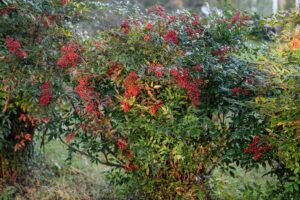
Because it requires little shaping, yaupon holly, which is native to the Southeast of the United States, is frequently planted as an informal hedge shrub or privacy screen. The following are the primary criteria for yaupon holly maintenance:
- For yaupon holly, pick a sunny place; it can thrive in full shade, but it will yield fewer of its vibrant, distinctive berries that way.
- Although this plant may grow in most types of soil, prepare soil that is moist but drains well.
- Although yaupon holly can tolerate some drought, it is still best to water it often.
- Following the establishment of the plant, fertilize once or twice a year.
Light Requirements
Yaupon holly can withstand both full and indirect sun. But full sun will produce more berries for your growing.
Soil & Potting
The yaupon holly prefers sandy soil but grows well in most soil compositions. It has a high tolerance for salty soil, making it a good choice for planting near the ocean.
Watering
Although yaupon hollies can withstand moderate drought, constant watering is still necessary. In the first year of the plant, water the root ball twice or three times a week; after that, water it once a week. In the morning and evening, use rainwater and distilled water instead of tap water and water.
Temperature and Environment
Yaupon holly’s USDA zones are 7 through 9, which means it is hardy in temperatures that dip as low as 0 to 10 degrees Fahrenheit. It can adapt to various climates but prefers slightly cooler and humid weather. It may struggle to survive winters at the higher end of its hardiness range. Yaupon hollies are generally cold-resistant.
Fertilization
Light fertilization can be applied to your yaupon holly once in the spring and once in the fall, but avoid doing so right before planting. Refer to the product label for directions on how much to use. A light covering of mulch can be applied to the ground, but stay away from high-nitrogen fertilizers.
Different Types of Yaupon Holly
I. vomitoria ‘Folsom’s Weeping’: dense shrub that bears a large number of berries and has short, tidy, thin leaves. 1-inch oval leaves with teeth
I. vomitoria ‘Nana’ or I. vomitoria ‘Dwarf’: Also known as dwarf yaupon holly, it reaches a mature height of 4 feet and a spread of 5 feet.
I. vomitoria ‘Pride of Houston’: Grows to a height of around 20 feet and a width of 15 feet. One of the heaviest berry producers, loved by birds from fall through winter.
I. vomitoria ‘Schilling’s Dwarf’: Rarely grows taller than three feet; extremely tolerant of salt
I. vomitoria ‘Stokes Dwarf’: Reachs a height of two to three feet; resistant to flooding and drought
I. vomitoria ‘Will Fleming’: Reachs a height of 15 feet; tolerant of salt spray and drought; good in moist soil
Pruning
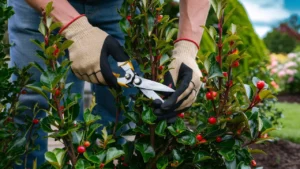
You can lightly prune a yaupon holly to keep it in the shape you want or to stop the spread of disease, though this is usually not necessary. Prune the branches on the lower side of the tree if it is small.
Reviving severely overgrown bushes can be achieved by trimming away as much as one-third of the branches. Trim a few chosen stems all the way down the plant. Cut branch ends back to 1/4 inch above a node facing the direction you want the branch to grow when shaping as a hedge. If you don’t want the shrub to grow into a thicket, remove suckers from the base of the plant as soon as they appear.
Propagating Yaupon Holly
The best way to reproduce yaupon holly is through small, autumn-taken, semi-hardwood cuttings. Here’s how to spread yaupon holly plants:
- Cut off the portion of tiny branches that are below a leaf set.
- After removing the lower leaves, apply a rooting hormone to the cut end.
- Until roots appear, place the cutting in a solution of coarse sand and perlite and keep it warm and wet.
- The cutting can be moved into a sizable pot that has been filled with a mixture of loam and sand after eight to ten weeks.
- Move the transplant to a permanent site.
How to Grow Yaupon Holly From Seed?
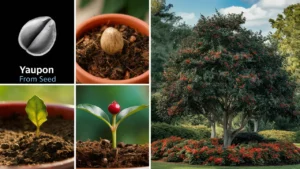
It is also feasible to gather the berries and extract the seeds to grow additional yaupon holly if you are comfortable handling them. This is the method.
- Pick out some berries and cut off the outer layer.
- Fill a 4-inch container with a soil combination that is half perlite and half loam, making sure to leave space at the top.
- Add a thin coating of sand and loam to the seeds.
- For a month or two, cover them with plastic wrap and set them on a heating mat set at 70 degrees Fahrenheit.
- After moving the pots indoors, refrigerate them for a duration of two to three months.
- Take off the plastic and relocate the pots to a somewhat shaded area.
- Throughout the first summer and winter, grow in partial shade.
- In the spring, transplant the plants.
Potting and Repotting Yaupon Holly
Although yaupon holly can be potted in any container with sufficient drainage, larger terracotta and wood pots work best. Plant the shrub in your container after adding potting soil and using your fingers to loosen the roots of the plant. Fertilize the soil every one to two weeks while keeping it damp.
Choose a new pot that is one size larger and fill it with fresh potting mix once the plant has outgrown its current container. The plant should be carefully removed and placed to the new container. Give the roots enough water to settle.
Overwintering
The yaupon holly can withstand cold temperatures and thrives in the winter. To shield the shrub from severe snowfall damage, you can give it a small pruning or tie ropes around its branches.
Common Pests & Plant Diseases
Although yaupon hollies can be vulnerable to leafminers, they are generally resistant to many pests and illnesses. The eggs can produce holes and discolouration in the leaves, and they hatch swiftly. To prevent the infestation from spreading, you should physically remove any damaged leaves and treat the plant with an insecticide. Eliminate impacted foliage and modify irrigation and fertilizing methods as required. Insects such as scale insects, whitefies, and spider mites are also drawn to yaupon hollies.
Fungal diseases that thrive in poorly drained soil, such tar spot, black root rot, and leaf spot, can affect yaupon hollies. Fumigicides can be used to treat powdery mildew, which is another minor issue that might affect yaupon holly plants.
How to Get Yaupon Holly to Bloom?
As long as they are healthy, yaupon holly plants ought to bloom easily.
Bloom Months
Yaupon holly usually blooms from March to May in the spring.
How Do Yaupon Holly Blooms Appear and Scent?
The yaupon holly has little white blossoms that can occasionally have a hint of pink. Red holly berries are the distinctive flower that follow these blossoms, which have a lovely scent.
How to Encourage More Blooms?
Yaupon holly is a low-maintenance plant that should blossom without any problems. However, to ensure that your plant is in optimal condition, give it regular watering and make sure it receives several hours of sunlight every day.
Caring for Yaupon Holly After It Blooms
Yaupon holly doesn’t require any special maintenance after it blooms. You will be able to take in their crimson berries’ striking appearance at this time.
Deadheading Yaupon Holly
Avoid deadheading yaupon holly as this will prevent the plant from bearing its jolly-looking berries.
Common Problems With Yaupon Holly
With the exception of occasional infestations and disease and the harm they cause, yaupon holly is typically resistant to pests and diseases. As with any tree, keep an eye out for these indicators and pay attention to the tree’s overall health as well as any potential insect infestation.
Yellowing Leaves
In the spring and summer, it is common for some of the yaupon holly’s leaves to turn yellow and fall off. A profusion of yellowing leaves may also indicate that the plant is under stress from overwatering, underwatering, transplant shock, or some other cultural issue.
Browning Leaves
This plant is drought-tolerant. However, a severe dehydration might cause leaves to become brown. It’s also possible that the leaves are suffering from windburn, which can cause foliage to become brown, particularly in the late winter and early spring.
Also Read: Natal Plum (Carissa Macrocarpa ) Complete Guide To Grow And Care

